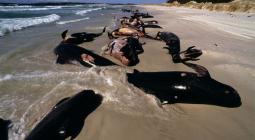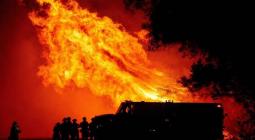Born in the ice age, humankind now faces the age of fire – and Australia is on the frontline.
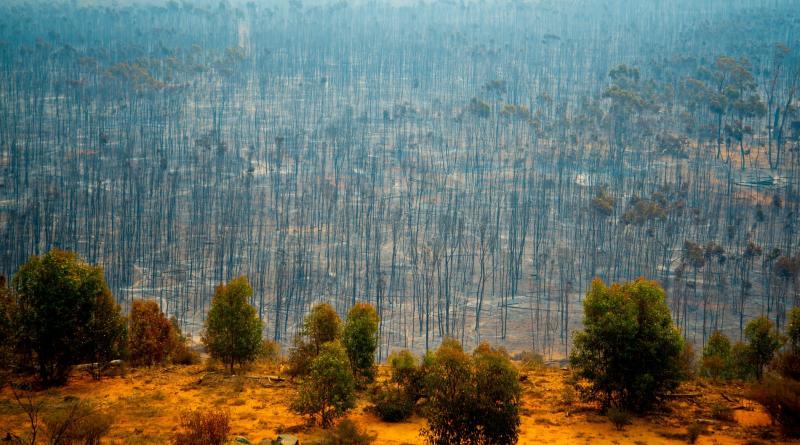
The bushfires and the plague are symptoms of something momentous unfolding on Earth – an acceleration of our impact on nature.
What has been the most shocking event of 2020? Was it awakening on New Year’s Day to more news of terror in Australia’s southern forests, to the realisation that the future was suddenly here, that this spring and summer of relentless bushfire was a planetary event? Was it the silent transmission of Covid-19, already on the loose and soon to overwhelm the world and change the very fabric of daily life everywhere at once? Or was it the surging race riots and protests, especially across America, where police brutality triggered grief, anger and outrage about the inequality and injustice still faced by black people? Could we even distinguish them from each other, this overlapping sequence of horrors?
Fire, plague and racism are always with us, percolating away, periodically erupting, sometimes converging. They came together in the colonisation of Australia when the conquering British brought smallpox, scorned Indigenous rights and fought Aboriginal fire with gunfire. Systemic racism is the virus, declared Black Lives Matter protesters.
In mid-June the historian Geoffrey Blainey, writing in the Australian in defence of colonial statues, looked back on the first day of the year. His opening gambit was this sentence: “On New Year’s Day, no major economist, no famous medical scientist and no political leader had predicted that this would be a tumultuous year.” Only a defiant climate sceptic could have been so uncurious about the events unfolding that day and so dismissive of expertise. For on New Year’s Eve, the savage summer had pulsed into frightening ferocity on the New South Wales south coast and in East Gippsland. Eight people died that day in the fires. Sleepless tourists and residents faced the dawn of the new year without power, fuel or mobile-phone reception, and some without homes. The day brought evacuations, road closures, panic buying, collective fear and a surge of dire predictions. For months, experts and bush residents had been preparing for a tumultuous fire season and here on the first day of 2020 was a frightening climax.
Throughout 2019, fire experts had pleaded with the federal government to hold a bushfire summit to prepare for the dreaded summer, but the prime minister had refused. The crisis could not be acknowledged in case it gave credence to the need for climate action.
As if neglect and omission in the face of the fire threat were not enough, Coalition politicians and their apologists then hastily encouraged lies about the causes of the fires, declaring that they were started by arsonists and that greenies had prevented hazard-reduction burns. Yet these fires were overwhelmingly started by dry lightning in remote terrain, and hazard-reduction burning is constrained by a warming climate. The effort to stymie sensible policy reform after the fires was as pernicious as the failure to plan in advance of them.
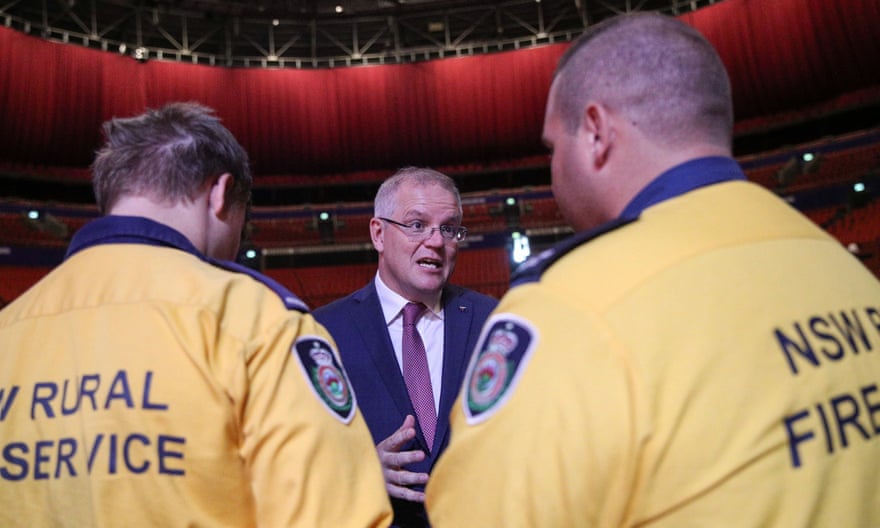
There was barely a moment to breathe between bushfires and Covid. Australians had been in lockdown for months even before the year began, fighting fires that had started at the end of winter, cowering indoors from smoke, heat and ash, and wearing masks on their brief forays outside. People spoke courageously of “the new normal” but did not yet understand that “normal” was gone. Just as they finally stepped outside to sniff the clearer autumn air, it was declared dangerous again. Their masks were still in their pockets.
Despite the connections between these crises, politicians were keen to separate them, as if one blessedly cancelled out the other, not least because the pandemic gave the prime minister a chance to reset after his disastrous summer. Instead of forcing handshakes he was forced to withhold them. For the beleaguered Coalition government, Covid seemed to provide the escape it wanted from climate politics.
Australians were forbidden from talking about the obvious relationship between bushfires and climate, so how will we manage to interrogate the common origins of climate change and the pandemic? The fires and the plague are both symptoms of something momentous that is unfolding on Earth: a concentration and acceleration of the impact of humans on nature. As the environmental scientists Inger Andersen and Johan Rockström argued in June: “Covid-19 is more than an illness. It is a symptom of the ailing health of our planet.”
Or, as the US science writer David Quammen succinctly put it: “We made the coronavirus epidemic.” Not in a laboratory but in the scary, runaway experiment humans are conducting with Earth. Historians and scientists predicted the unpleasant surprises. Like most infectious diseases in the history of humanity, Covid-19 spilled over from wild animals to humans and became a pandemic because of ecosystem destruction, biodiversity loss, climate change, pollution, the illegal wildlife trade and increased human mobility. “So when you’re done worrying about this outbreak,” Quammen warns, “worry about the next one. Or do something about the current circumstances.”
Doing something about it means more than finding a vaccine; it means urgently addressing the causes of the climate emergency and the biodiversity crisis. It means understanding how dire the current rupture is in the long-term relationship between humans and nature.
Could people be alive down there?
In November 2019, as forest fires worked their way down the eastern seaboard, I walked for a week in the Australian Alps, my annual pilgrimage to the high country. The wild granite tors, the delicate beauty of the snow gums and the exhilarating freedom of the alpine herb fields have always lifted my spirits. In late spring and early summer this landscape still carries the memory of snow, of a magic, ethereal otherworld I came to know on skis as a child. Slicks of ice remained tucked under crags. It is a place apart, of subtle colours and sharp air, where ranges of cerulean blue cascade in receding waves to the horizon. But this time the mountains had all gone, swallowed by an apocalypse.
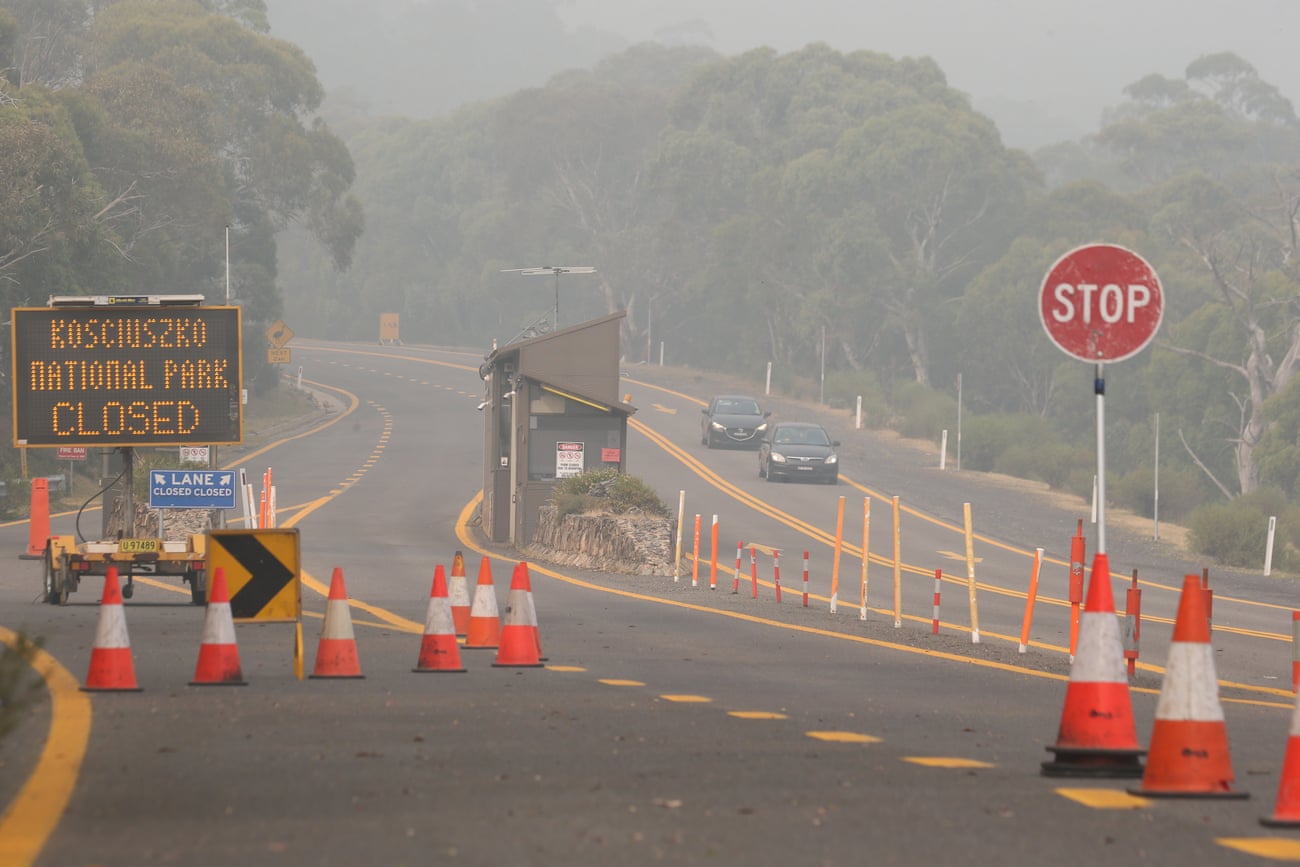
From high in the Kosciuszko national park, I felt like a refugee from the suffering world of the plains, finding solace in the snowgrass and minty alpine forests. I could see nothing of the world below. In every direction I looked down upon a strange, suffocating orange blanket. This was no mystic lake of fog that would evaporate in the morning sunshine; it was something sinister and malevolent, infusing every scarp and canyon with its sickness. There below me, Australia was burning. Could people still be alive down there, in such dense, acrid smoke? Could they breathe? In the mornings, a temperature inversion kept the ugly blanket below me, but each afternoon my eyes started smarting as smoke infiltrated the alpine valleys, turning the sun red. That smoke killed 10 times more people than the flames. It was coming for me and I couldn’t go any higher.
This experience of looking down on a burning world brought home to me, perhaps more forcibly than facing the flames below, what the future might hold. One way to make sense of this critical tipping point is the idea that we are now living in the Anthropocene, having left behind the relatively stable Holocene epoch, the period since the last ice age. The Anthropocene – the age of humans – places us on par with other geophysical forces such as orbital variations, glaciers, volcanoes and asteroid strikes, and recognises our power to change the planet’s atmosphere, oceans, climate, biodiversity, even its stratigraphy. Earth was first jolted into the Anthropocene by the industrial revolution in the late 18th century, when people began digging up and burning fossil fuels.
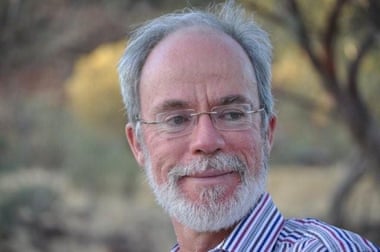
But as I gazed down on the smoke, I remembered an alternative name for this era that has been proposed by the historian Stephen Pyne. It is the Pyrocene: a fire age, comparable to past ice ages. The Pyrocene puts fire at the centre of the human ecological story and contrasts it with ice. Fire is alive and ice is dead. Fire is at the heart of human civilisation, for we are a fire species. Yet we are also, paradoxically, creatures of the ice. We were born in the Pleistocene, a geological epoch that began 2.5m years ago and introduced a series of rhythmic ice ages – or, to be precise, one long ice age punctuated by regular brief interludes of interglacial warmth. The repetitive glaciations of the Pleistocene, which demanded innovation and versatility, promoted the emergence of humanity on Earth.
The Pyrocene is a more radical category than the Anthropocene. The Anthropocene declares the end of the latest interglacial period. The Pyrocene goes further, by declaring the end of the much longer and older Pleistocene, the whole epoch of ice ages. It announces the end of the age of ice, the beginning of the age of fire, and the end of what was truly the age of humans. Not the beginning of the age of humans, as is suggested by the smugly named Anthropocene, but the end. And Australia is on the frontline of the Pyrocene. This is what I pondered as I watched the acrid orange blanket snake up the alpine gullies towards me. Are we witnessing the beginning of the end? Is this what the Pyrocene looks like? Nowhere to go but up, and no up to go to?
The Anthropocene is primarily a geological signature, whereas the Pyrocene is biological; they are both acts of historical imagination that rupture the conventional periods within which we imagine our existence. They ask us to see human history not as something defined by documents or brought into being by the invention of writing, but as a diverse cultural odyssey that is also a biological story – even a geological one. If humans have become so powerful that they can change the condition of the planet’s oceans and atmosphere, then we urgently need to think in deeper time, on a scale where we might better understand the environmental rhythms we are so profoundly disturbing.
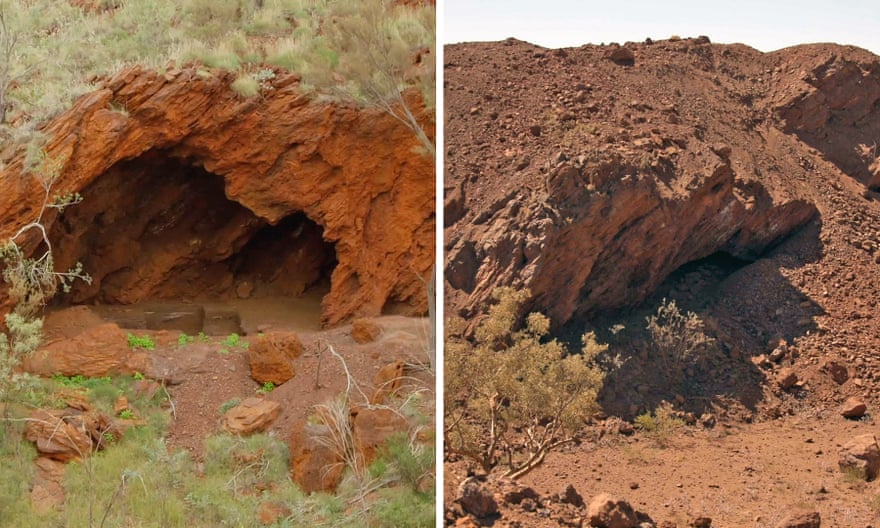
And yet, at the beginning of Reconciliation Week in Australia, amid the climate and Covid emergencies and as race riots escalated in the US, the corporate mining giant Rio Tinto detonated 46,000 years of human history at Juukan Gorge in the Pilbara. It was an act of sacrilege committed even as George Floyd’s death unleashed avowals around the world that Black Lives Matter. In the age of Covid, people rallying against black deaths in custody donned masks and carried banners inscribed with Floyd’s final words: “I can’t breathe.”
Several years before Juukan Gorge was destroyed, archaeologists found a 4,000-year-old belt made of plaited hair in one of its rock shelters. Its DNA was associated with today’s Puutu Kunti Kurrama and Pinikura traditional owners. Chris Salisbury, Rio Tinto’s chief executive of iron ore, apologised for “the distress” caused by the destruction of the site but not for the act itself, which he defended. Here is staggering evidence of Australia’s continuing inability to empathise or identify with the peoples who discovered this continent and who today are still fighting for recognition, justice, respect and equality before the law.
It is confirmation that in the 21st century our country remains a colony, still unable to accept (as the Uluru statement puts it) that “this ancient sovereignty can shine through as a fuller expression of Australia’s nationhood”. The deep environmental and cultural inheritance of this continent, with all the wisdom and perspective it might offer about living in this place, about survival, species and cultural burning, about fires, plagues and rising seas, is not yet important enough to Australians. When will it be, if not now? The insidious smoke is coming.
• This essay will be part of the anthology Fire, Flood and Plague, edited by Sophie Cunningham and published by Penguin Random House in December
31 October 2020
The Guardian

